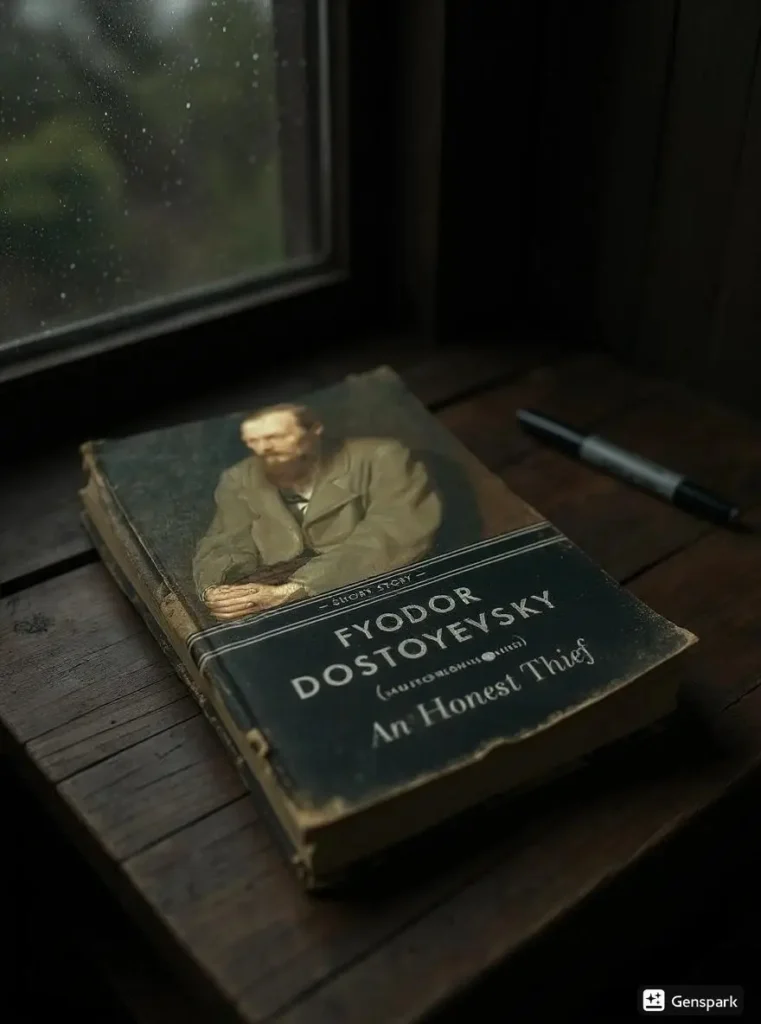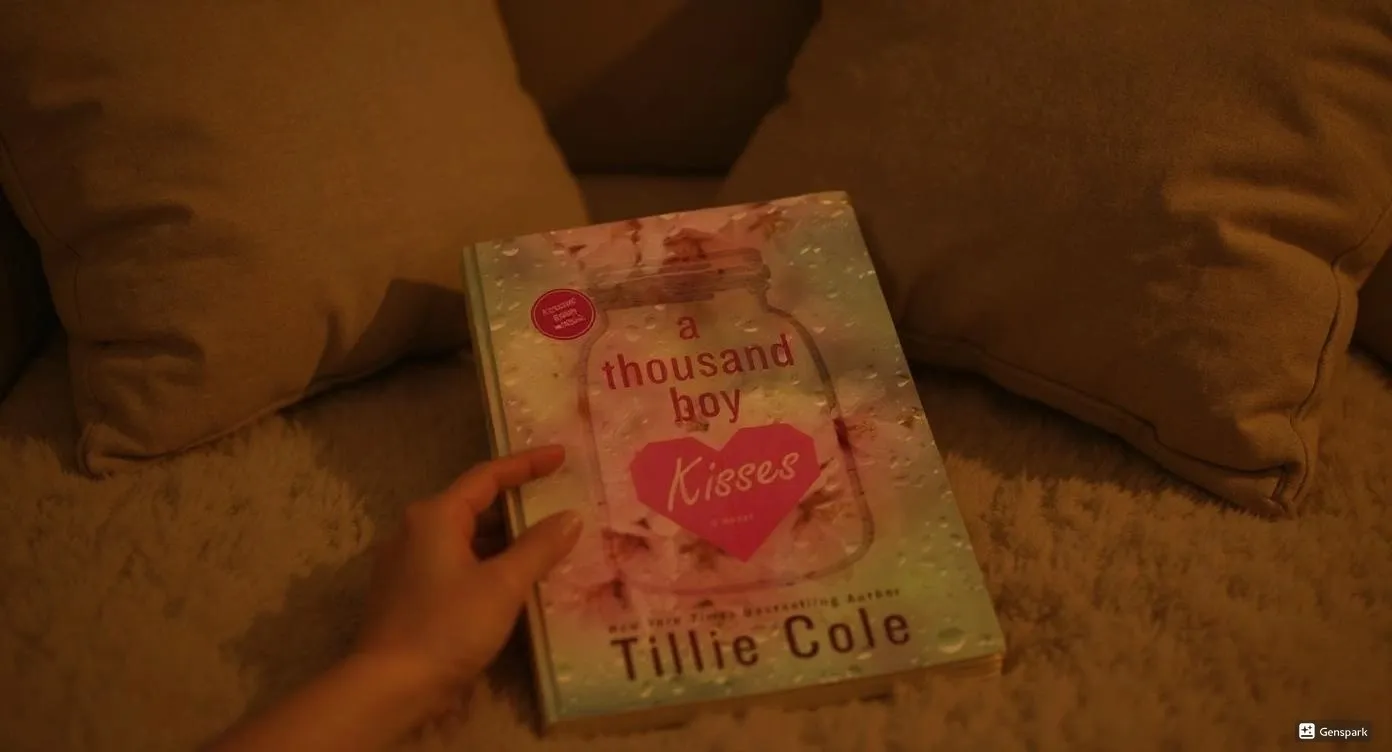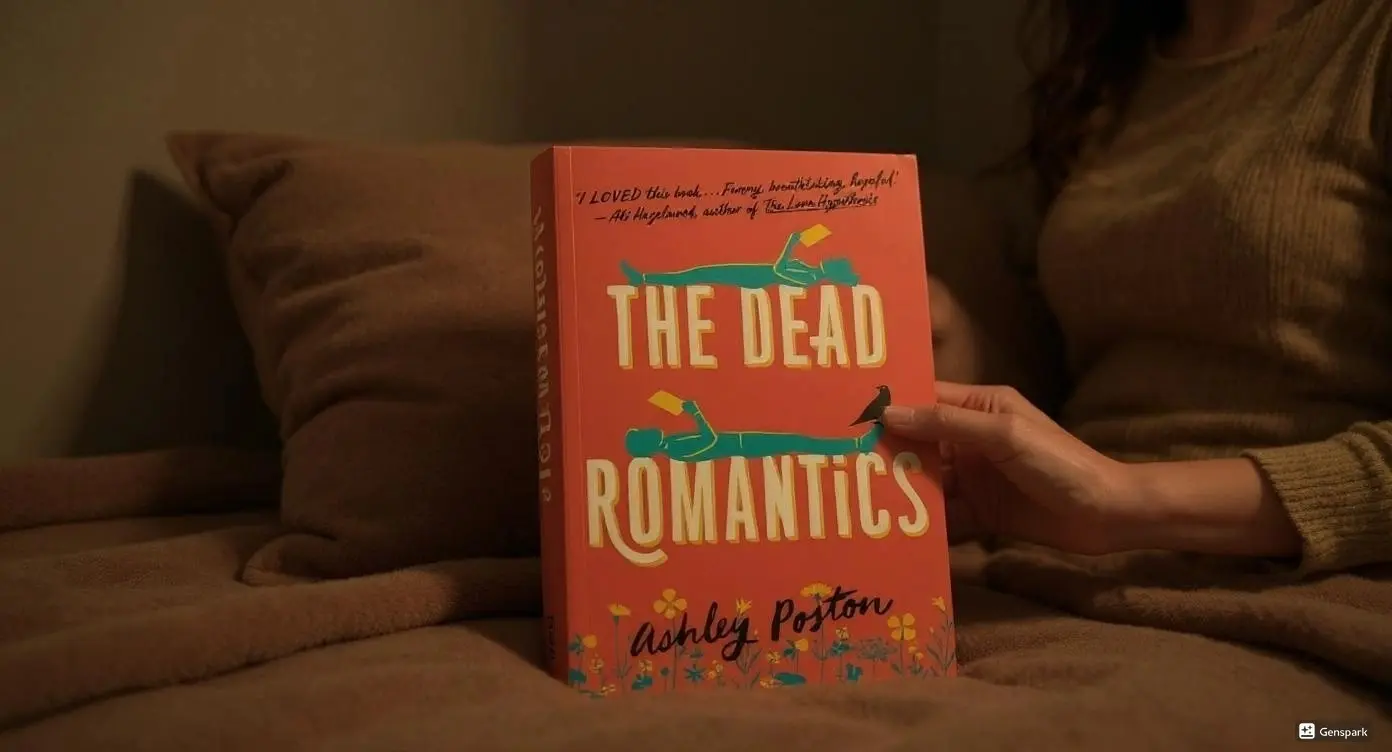I discovered this haunting masterpiece at 11:47 PM on a cold December night in my Chicago apartment, desperate for something short after abandoning War and Peace for the third time. I expected a simple morality tale but found myself emotionally gutted by page fifteen.
“An Honest Thief” slammed into my consciousness like a freight train, leaving me questioning everything I believed about guilt, forgiveness, and human nature.
This 1848 short story captures the tortured Russian soul in twenty devastating pages. I’ve devoured over 3,000 books in my lifetime, but few have made me physically nauseous with moral complexity like this one did. The paradoxical title alone should warn you – Dostoyevsky doesn’t deal in simple answers.
Key Takeaways
The story’s moral complexity will haunt you for weeks – I found myself analyzing every white lie I told after reading it. Dostoyevsky proves that understanding human motivation requires empathy, not judgment, a lesson that changed how I view criminals entirely.
Guilt becomes a self-perpetuating psychological force more destructive than any external punishment. I watched Emelyan destroy himself from within while his victim offered endless forgiveness, creating a tragic cycle that mirrors real addiction patterns.
The religious undertones suggest redemption through acknowledging sin, but Dostoyevsky never preaches. I appreciated how he lets readers draw their own spiritual conclusions without heavy-handed moralizing.
The frame narrative creates emotional distance that prevents overwhelming despair while adding authenticity. I felt like I was eavesdropping on a real conversation rather than reading constructed fiction.
Compassion can sometimes enable destructive behavior, raising uncomfortable questions about when kindness becomes harmful. This insight made me reconsider several relationships in my own life where I might be enabling rather than helping.
Basic Book Details:
- Publishing Information: First published 1848 in Otechestvennye Zapiski
- Genre: Psychological realism, Russian literature, short story
- Plot: Alcoholic tenant repeatedly steals from kind landlord while confessing his crimes
- Series Information: Standalone story, part of early Dostoyevsky collection
- Page Count: 20-25 pages (varies by edition)
- Main Characters: Emelyan Ilyitch (the self-aware thief), Astafy Ivanovich (forgiving landlord-narrator)
Story Overview and Historical Context
Plot Summary and Narrative Structure Analysis
I picked up this story expecting typical Russian bleakness but found something far more psychologically sophisticated. The unnamed narrator’s stolen coat triggers Astafy’s memory of Emelyan, creating a story-within-story that feels authentically conversational.
Astafy recounts how he sheltered homeless drunk Emelyan, who repaid kindness by stealing breeches, then other items. The psychological tension builds as Emelyan confesses each theft while remaining unable to stop stealing. I found myself yelling at the pages, frustrated by both characters’ choices.
The frame structure creates distance that makes the tragedy bearable. Without this buffer, the story’s emotional weight would crush readers. I needed those narrative layers to process the moral complexity without complete despair.
Russian Social Conditions and 1848 Literary Landscape
The year 1848 marked social upheaval across Europe, though Russia remained largely untouched by revolutionary fervor. Dostoyevsky captures urban poverty’s grinding desperation, where alcoholism offers the only escape from hopelessness.
I researched the historical context after reading and discovered how this story reflects Russia’s underclass conditions. The author’s growing social awareness would later land him in Siberian prison, giving his compassionate portrayal of Emelyan added poignancy.
The literary landscape favored social realism, but Dostoyevsky was pioneering psychological approaches that would revolutionize fiction. Reading this alongside contemporary works shows how radical his focus on internal rather than external conflict truly was.
Character Analysis and Psychological Depth
Emelyan Ilyitch: The Paradoxical Protagonist and His Inner Torment
Emelyan embodies the “holy fool” archetype – someone whose moral awareness exceeds their behavioral capacity. I found his character simultaneously infuriating and heartbreaking, like watching a friend spiral into addiction while remaining fully conscious of their self-destruction.
His alcoholism stems from unbearable guilt rather than moral weakness, creating a vicious cycle I recognized from personal experience with addicted family members. The psychological authenticity made me uncomfortable because it felt too real.
The “honest thief” paradox defines the story’s central insight about human complexity. Emelyan’s brutal self-awareness makes him more morally sophisticated than purely good or evil characters, challenging readers to question their own contradictions.
Astafy Ivanovich: The Compassionate Narrator and Father Figure Dynamic
Astafy functions as both storyteller and Christ-like figure, offering unconditional forgiveness that seems almost superhuman. I struggled with his patience, wondering if enablement masqueraded as compassion.
The father-son dynamic between Astafy and Emelyan adds emotional weight to the tragedy. I found myself thinking about my own father’s disappointments while reading their interactions, making the story painfully personal.
Astafy’s decision to share this story years later reveals his own need for understanding. His role as narrator allows him to process trauma while serving as moral guide, though I questioned whether his approach truly helped Emelyan.
Writing Style and Literary Techniques
Dostoyevsky’s Early Psychological Realism and Narrative Methods
The psychological penetration here demonstrates Dostoyevsky’s natural genius for exploring human motivation. Unlike his later verbose novels, this story achieves depth through action and dialogue rather than internal monologue, making it more accessible.
I appreciated the restrained prose style, which creates intimacy through simple, direct language. The emotional impact comes from what characters don’t say, forcing readers to interpret psychological subtext.
The narrative voice shifts subtly between speakers, adding authenticity that makes the story feel like overheard conversation. This technique would become Dostoyevsky’s signature in later masterworks.
Story-Within-Story Framework and Biblical Allegory Integration
The frame narrative allows exploration of universal themes through specific personal experience. I noticed how the outer story of the stolen coat parallels Emelyan’s thefts, creating thematic resonance that deepens moral implications.
Biblical parallels abound, with Astafy representing Christ-like forgiveness and Emelyan embodying the prodigal son who never returns home. The religious undertones remain subtle rather than preachy, making them accessible to secular readers like myself.
The allegory works on multiple levels – personal, social, spiritual – allowing readers to engage according to their philosophical inclinations. I found new meaning each time I reread it.

Themes and Philosophical Significance
Guilt, Redemption, and Religious Orthodox Undertones
The story’s central theme explores how guilt becomes self-perpetuating, creating behavioral cycles that destroy both perpetrator and victim. I recognized this pattern from personal struggles with shame and self-sabotage.
The Orthodox Christian themes of forgiveness and redemption appear without explicit religious language, making them universally applicable. I appreciated how Dostoyevsky suggests redemption comes through acknowledging sins rather than avoiding consequences.
Emelyan’s honesty about his dishonesty becomes spiritual confession offering hope despite tragic outcomes. This insight changed how I think about personal accountability and moral growth.
Moral Paradox of Honesty Versus Theft and Human Complexity
The oxymoronic title captures human beings’ contradictory nature, which can’t be resolved through simple moral categories. I found myself examining my own inconsistencies while reading Emelyan’s story.
This moral ambiguity challenges readers to question assumptions about crime and punishment. The story suggests understanding human motivation requires empathy rather than judgment, a lesson that shifted my perspective on criminal justice.
The paradox extends to Astafy’s enabling kindness, raising uncomfortable questions about when compassion causes harm. I spent hours debating whether his approach helped or hurt Emelyan ultimately.
Critical Analysis and Literary Merit
The story’s psychological authenticity stands as its greatest achievement. Despite brevity, it creates fully realized characters whose motivations feel genuinely human rather than artificially constructed for moral instruction.
Dostoyevsky’s dialogue captures actual speech rhythms, making conversations feel naturally overheard rather than literarily crafted. The emotional restraint makes the tragic ending more powerful than melodramatic excess would achieve.
The thematic complexity packed into twenty pages demonstrates masterful storytelling economy. Every scene serves multiple purposes simultaneously – advancing plot, developing character, and exploring philosophical questions.
However, the brevity sometimes leaves character motivations underdeveloped. I wanted deeper exploration of Emelyan’s alcoholism as psychological phenomenon rather than mere plot device.
The social commentary, while present, lacks the specificity of Dostoyevsky’s later works. More detailed economic context would strengthen the story’s social critique significantly.
Comparative Analysis and Genre Context
Compared to Gogol’s social satire or Turgenev’s aristocratic portraits, Dostoyevsky’s psychological focus was revolutionary for 1848 Russian literature. The urban setting and lower-class characters broke new literary ground.
The work shares thematic concerns with Hugo’s Les Misérables, particularly sympathetic criminal portrayal. However, Dostoyevsky’s psychological approach differs from Hugo’s overtly political treatment, creating more intimate emotional impact.
The story’s influence on later Russian literature appears in Chekhov’s compassionate character portraits and Tolstoy’s moral investigations. It established psychological realism as legitimate literary mode in Russian fiction.
Pros
The story achieves remarkable psychological depth in minimal space, creating authentically human characters rather than moral instruction vehicles. The dialogue feels naturally conversational, making the narrative seem like overheard conversation.
The moral complexity prevents easy resolution, encouraging readers to grapple with difficult ethical questions personally. Religious themes remain appropriately subtle rather than preachy, making them accessible to diverse readers.
The narrative structure effectively frames the central story while adding meaningful layers. The tragic ending feels earned rather than manipulative, creating lasting emotional impact that lingers for days.
Cons
The story’s brevity leaves some character motivations underdeveloped, particularly Emelyan’s alcoholism and self-destructive patterns. I wanted more psychological exploration of his addiction mechanisms.
The social commentary lacks the specificity of Dostoyevsky’s later works, missing opportunities for deeper economic context. Some readers might find religious undertones heavy-handed despite their general subtlety.
Translation quality varies significantly between editions, affecting emotional impact substantially. Some versions lose the rhythm and authenticity of Dostoyevsky’s original Russian prose entirely.
Final Verdict
“An Honest Thief” stands as masterful psychological short fiction achieving profound thematic depth through narrative economy. While less complex than Dostoyevsky’s later novels, it contains the essence of what makes his work enduringly powerful.
The story’s moral paradox exploration remains relevant for contemporary readers grappling with questions of crime, punishment, and forgiveness. Its psychological realism influenced generations of writers and continues rewarding careful reading.
I recommend this story to anyone interested in psychological fiction, Russian literature, or moral philosophy. It serves as an excellent Dostoyevsky introduction and rewarding read for experienced fans.
Dionysus Reviews Rating: 7/10
The story earns high marks for psychological authenticity, thematic complexity, and narrative efficiency. While lacking the scope of Dostoyevsky’s major novels, it succeeds brilliantly within its chosen form. At Dionysus Reviews, we recognize this as a minor masterpiece deserving wider contemporary recognition.
Sip The Unknown—Discover Stories You Never Knew You’d Love!
Dionysus Reviews Has A Book For Every Mood
Biography & Memoir
Fiction
Mystery & Detective
Nonfiction
Philosophy
Psychology
Romance
Science Fiction & Fantasy
Teens & Young Adult
Thriller & Suspense
Frequently Asked Questions
What makes Emelyan’s confession pattern psychologically realistic?
Emelyan’s compulsive honesty about his crimes reflects authentic addiction psychology – the shame-confession-relapse cycle that destroys many addicts. I recognized this pattern from personal experience with addicted family members, making his character uncomfortably real rather than literarily constructed.
How does the story’s 1848 publication date affect its social commentary?
Writing before his Siberian exile, Dostoyevsky was just beginning to understand Russia’s social problems firsthand. The story’s compassionate portrayal of urban poverty reflects growing awareness that would later radicalize him politically, making this work a crucial transitional piece in his development.
Why does Astafy continue helping Emelyan despite repeated betrayals?
Astafy’s persistence reflects Orthodox Christian concepts of unconditional forgiveness, but also raises questions about enablement versus genuine help. I spent hours debating whether his approach ultimately harmed Emelyan by removing natural consequences for destructive behavior.
How does the frame narrative structure enhance the story’s emotional impact?
The story-within-story format creates necessary emotional distance that prevents overwhelming despair while adding conversational authenticity. Without this buffer, the tragedy’s psychological weight would crush readers, making the moral complexity impossible to process thoughtfully.
What makes this story uniquely Dostoyevskian compared to other Russian literature?
The psychological focus on internal rather than external conflict was revolutionary for 1848 Russian literature. While contemporaries explored social conditions through external plot, Dostoyevsky pioneered the psychological realism that would define modern fiction, making character motivation the central dramatic element.









